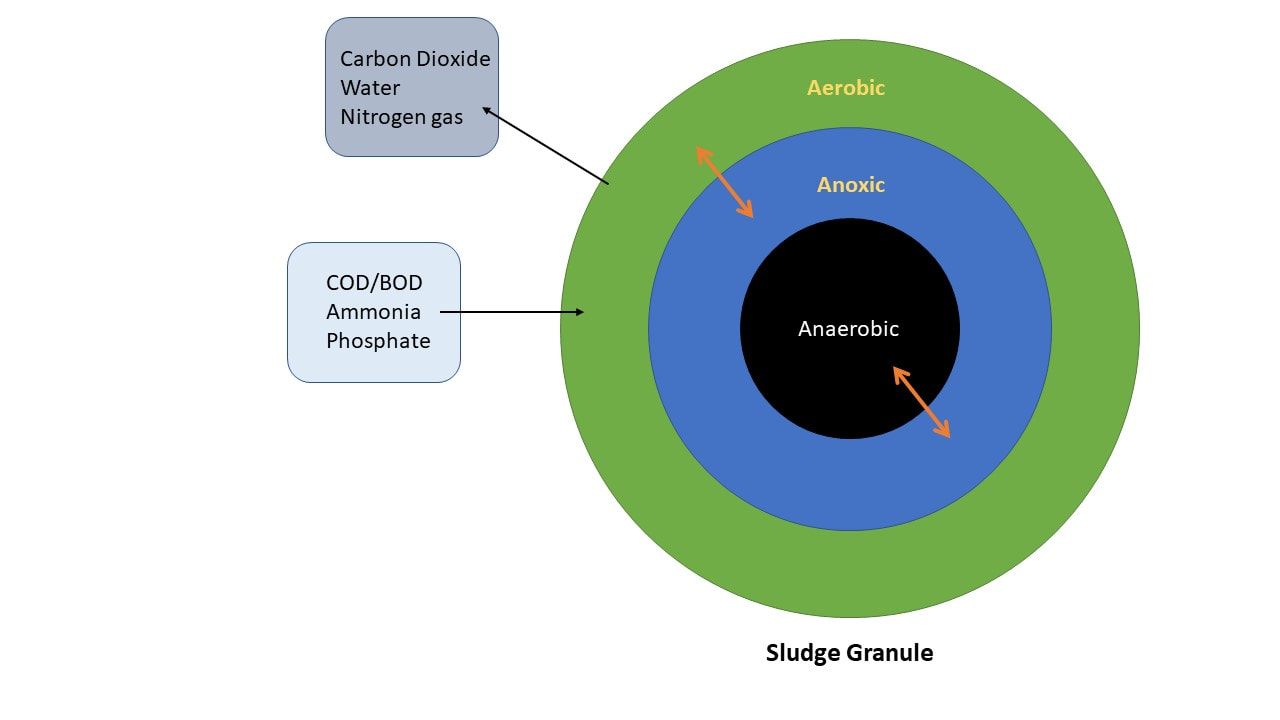Here is what we found:
- D.O. readings come from meters mounted to tank walls or dropped in by an operator. This is the D.O. in the water phase - remember the bacteria in activated sludge other systems are designed to be in the floc or biofilm.
- Oxygen transfer across the biofilm results in zones that move from oxygen rich to even anaerobic at the center of floc. This is how we find Clostridia and other anaerobic bacteria in highly aerobic systems.
- While AOB/NOB tend to grow on the outside layer of the biofilm where oxygen is most abundant, the cells are still subject to biofilm oxygen transfer across extracellular polymer (EPS) materials that bind the floc.
- There is a relationship between D.O. required and the amount of biological solids maintained in the system. Higher MLSS/MLVSS needs more oxygen to keep a greater percentage of the floc oxygen rich.
- Ability of oxygen to penetrate into floc is specific to system. Variation in aeration type, EPS makeup, sludge age, inorganics, temperature, and other factors impact oxygen transfer into the floc.


 RSS Feed
RSS Feed